Opinion
Addressing The Crisis Of E Waste In Our Country
Opinion
EFCC Probe on Refineries: Transparency or Political Witch-Hunt
By Aminu Umar
The recent move by Nigeria’s anti-corruption agency, the Economic and Financial Crimes Commission (EFCC), to probe the handling of finances and contracts related to the Port Harcourt and Warri refineries has stirred a heated debate on whether the investigation represents a genuine drive for transparency or a politically motivated witch-hunt.
At the heart of the issue is the EFCC’s request for salary records and allowances of 14 key officials who served during the refinery rehabilitation period. These include high-ranking executives such as Abubakar Yar’Adua, Mele Kyari, Isiaka Abdulrazak, Umar Ajiya, Dikko Ahmed, Ibrahim Onoja, Ademoye Jelili, and Mustapha Sugungun.
Others listed are Kayode Adetokunbo, Efiok Akpan, Babatunde Bakare, Jimoh Olasunkanmi, Bello Kankaya, and Desmond Inyama. The commission appears focused on payments and administrative decisions linked to the multi-billion naira refinery resuscitation program.
However, conspicuously absent from the list of those summoned is Adedapo Segun, the current Chief Financial Officer (CFO) of the Nigerian National Petroleum Company Limited (NNPCL), who served as Executive Vice President for Downstream and was directly in charge of treasury, refinery operations, shipping, and trading. During this time, all payments related to the Port Harcourt and Warri refineries were made under his financial supervision.
This omission has raised several questions: Why is Segun not being invited or questioned if the goal is transparency? Why is the probe appearing selective?
Equally puzzling is the inclusion of Abubakar Yar’Adua, whose role is administrative rather than operational, while high-profile former Group Managing Directors (GMDs) such as Andrew Yakubu, and Emmanuel Ibe Kachikwu, who played central roles in refinery policy and contracts in previous administrations, appear to have been bypassed.
We are not saying Mele Kyari is innocent or guilty, but we must insist on a fair process,” a stakeholder familiar with the situation told this reporter. “This shouldn’t be a selective trial. The people who gave out the contracts and approved the funds must be investigated too.”
The tension is heightened by growing concerns that the probe is targeted at individuals from a specific region. Many observers fear this could deepen regional mistrust, especially if only northern executives are made scapegoats.
We are worried this is being used to paint Northerners as the only looters,” said one source. “You cannot fight corruption with bias. You need to look at all sides. This includes those who were ‘exonerated’ too quickly.”
Another burning question is why individuals such as Emmanuel Ibe Kachikwu, former Minister of State for Petroleum, and Andrew Yakubu, former GMD of NNPC, who had strategic influence on contract awards and rehabilitation policies, are not facing any scrutiny. Critics argue that anyone involved at any stage of the refinery rehabilitation—whether from policy, finance, or operational perspectives—should be equally held accountable.
Civil society groups and international anti-corruption bodies are now being urged to step in. The call is for an independent and thorough probe that includes all relevant stakeholders—without exception.
“We are calling on NGOs and international organisations to ensure that this is not a political trial. If you must clean up the refinery system, you must do it across the board,” the statement concluded.
In a country plagued by decades of failed refinery operations and opaque oil sector dealings, the public is watching this investigation closely. The EFCC is at a crossroads: its actions will either affirm its commitment to justice or expose it to accusations of being used as a tool for political vendettas.
For now, Nigerians wait—with growing skepticism.
Opinion
Censoring the Uncensored: The irony behind Hisbah’s ban on Hamisu Breaker’s song
By Ummi Muhammad Hassan
Following the ban by Hisbah on a new song titled “Amana Ta” by Hamisu Breaker, social media went into an uproar, capturing the attention of the public.
In the early hours of April 24, 2025, social media was filled with reactions following a press statement issued by the Deputy Commander of the Hisbah Board, Kano State chapter, Dr. Khadija Sagir, announcing the ban of Breaker’s new song. The reason cited was that the song allegedly contains obscene language.
This announcement, however, triggered a counterreaction from the public. Many became curious to know more about the song and the so-called obscene content, with some taking to their social media handles to express their opinions.
The irony of the situation is that Hisbah unintentionally gave the song more prominence, causing it to go viral. Many people who were previously unaware of the song searched for and listened to it, just to understand the controversy.
In my opinion, after listening to the song, it contains no obscene language. Rather, the issue seems to lie with some young women who mimed the song in a suggestive manner after hearing that Hisbah had labelled it as indecent—as though to dramatize or reinforce the claim. Some even appeared as if they were intoxicated.
To me, this is both devastating and concerning, as it reflects the erosion of the strong moral standards once upheld by Hausa women. Many young people are now making videos lip-synching the song in indecent ways. It made me pause and ask myself: where has our shyness gone? I believe this question deserves a deeper conversation on another day.
In Breaker’s case, thanks to the Hisbah ban, he became the most trending Kannywood artist in April, and his song went viral—and continues to trend.
A similar incident occurred earlier this year when the federal government banned Idris Abdulkareem’s song *Tell Your Papa*. That action unexpectedly brought the artist back into the spotlight, causing the song to trend widely.
Social media has made censorship increasingly difficult. Once a movie, text, or song reaches the internet, it becomes almost impossible to control—even by the creators themselves.
While social media censorship remains a challenge, this recent incident highlights the need for the government to intensify efforts against the spread of indecent content—through Hisbah and agencies like the Kano State Film Censorship Board.
Clear guidelines should be put in place, requiring artists and filmmakers to submit their content for review and approval before public release. This, among other strategies, could help reduce the spread of inappropriate material.
Additionally, Hisbah should be more mindful of how such announcements are made, as they may inadvertently promote the very content they seek to suppress.
Ummi Muhammad Hassan, Ph.D., is a lecturer in the Department of Mass Communication at Bayero University, Kano. She can be reached via email at: ummeemuhammadhassan@gmail.com.
Opinion
After My Parents, Then Prof. Nelson Aluya A Tribute to a Mentor Who Changed a Life
By Zubair A. Zubair
When Dr. Veronica, then a lecturer at the University of San Francisco, “adopted” me as her son in early 2020, I never imagined that a simple WhatsApp introduction would alter the trajectory of my life. Nestled in a group chat named “Nigerians in Diaspora,” I soaked up every opportunity she shared, scholarships, networking events, webinars. One afternoon in 2020, she tagged the president of the Nigerian American Public Affairs Committee (NAPAC USA), Prof. Nelson Aluya, in a post about an upcoming virtual panel. Without hesitation, I sent him a direct message expressing my eagerness to join the discussion.
At the time, Prof. Aluya was an Associate Professor of Medicine at Rutgers Medical School in New Jersey. His response was swift and generous: “Welcome aboard, Zubair. I look forward to seeing you there.” Little did I know that his simple act of inclusion would mark the beginning of a mentorship unlike any other. In that moment, I realized there was a connection. I had first encountered his name, and his eloquent voice, on NTA News in February 2018, when he spoke passionately about diabetes awareness. His clarity and compassion had captivated me then; now, I was on the verge of being guided by him.
A Promise to Mentor
During our first call in 2020, I nervously explained that I was a university student back home in Kano. Prof. Aluya listened intently, then made me a promise: “I will mentor you to become the leader Nigeria needs, confident, compassionate, and competent.” He introduced me to Aliyu Sulaiman, another aspiring youth leader, and together we launched a new WhatsApp group in early February 2021 called “Wake Up Africa.” Our shared mission was ambitious: to bridge divides between Africans on the continent, Africans in the diaspora, and people of African descent worldwide.
Trials, Tribulations, and Unwavering Support.
.
Life’s challenges tested our resolve almost immediately. In March 2021, I lost my phone unexpectedly and was unable to rejoin the group for eight months. Just as I managed to reconnect in November, fate intervened again: during my “Use of English” exam, I misplaced my replacement phone. Forced offline once more, I spent two months unable to participate. Yet every time I resurfaced, Prof. Aluya reached out with the same warmth: “Zubair, we miss your voice. How can I help?” His unwavering support reminded me that mentorship transcends geography and setbacks.
From Virtual Chats to In-Person Impact
In January 2022, Prof. Aluya sponsored Aliyu, Shamsudden, and me to attend a Pan-African youth forum in Abuja. Walking into that conference hall, I felt the weight of possibility settle on my shoulders. Surrounded by young change-makers, I realized how vital our “Wake Up Africa” vision could be. Buoyed by this experience, Prof. Aluya challenged us to formalize our efforts. Thus, in February 2022, Youth Together Work Together (YTWT) was born a youth-led organization dedicated to community action across Nigeria.
Three Signature Projects
Under Prof. Aluya’s guidance and financial backing, YTWT executed three flagship initiatives over the next eighteen months:
1. Religious Tolerance Seminar (Kaduna, July 2022): Bringing together Muslim and Christian youth to foster dialogue and mutual respect.
2. Market Cleanup (Kano, August 2022): Mobilizing students, activists, journalists and traders to restore the city’s bustling markets, highlighting civic pride.
3. Youth Against Drug Abuse Campaign (Abuja, May 2024): Conducting workshops in schools, markets and community centers to educate peers on substance-abuse prevention.
Each project bore Prof. Aluya’s fingerprints: from strategy sessions over Zoom to on-the-ground coordination and resource mobilization.
Beyond Events: Lifelong Lessons
Prof. Aluya’s investment in me extended far beyond sponsoring trips. He guided me through public-speaking workshops, critiqued my writing, and introduced me to networks of professionals across healthcare, technology, and public policy. In July 2023, he arranged for me to attend a cybersecurity seminar in Jos; in April 2024, an IT conference in Ibadan; and this March, the ‘Come Talk Africa’ in Abuja. At each event, he reminded me: “Zubair, your voice matters. Use it well.”
His mentorship taught me resilience in the face of failure, humility in success, and generosity without expectation. When I doubted my talents, he reaffirmed them. When I feared I wasn’t enough, he declared that I already was.
A Mentor’s Legacy
Mentors come and go, but rare is the one who reshapes your understanding of service, leadership, and compassion. Prof. Aluya did more than fund projects, he believed in my potential when others did not see it. He challenged me to think bigger, serve better, and lead with my heart. Without ever asking for thanks, he gave of himself freely: his time, his wisdom, and his unwavering belief in Nigeria’s youth.
Conclusion
My parents gave me life and love. After them, Prof. Nelson Aluya gave me purpose and direction. As I prepare to graduate and embark on my own journey of service, I carry his lessons with me: to uplift others, to persevere through adversity, and to lead with integrity. This tribute, published today, is but a small token of my gratitude, and a reminder that some of the greatest gifts we receive are the people who see our potential before we see it ourselves.
“A mentor is not always the one who stands at your side, it is the one who reaches out to lift you higher.”
– Prof. Nelson Aluya
By Zubair A. Zubair
Kano, Nigeria
-

 Opinion3 years ago
Opinion3 years agoOn The Kano Flyovers And Public Perception
-

 Features4 years ago
Features4 years agoHow I Became A Multimillionaire In Nigeria – Hadiza Gabon
-

 Opinion4 years ago
Opinion4 years agoKano As future Headquarters Of Poverty In Nigeria
-
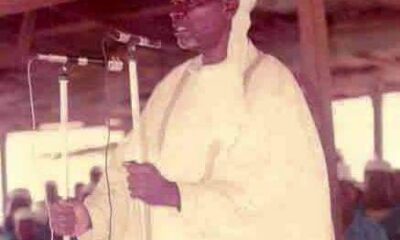
 History4 years ago
History4 years agoSheikh Adam Abdullahi Al-Ilory (1917-1992):Nigeria’s Islamic Scholar Who Wrote Over 100 Books And Journals
-
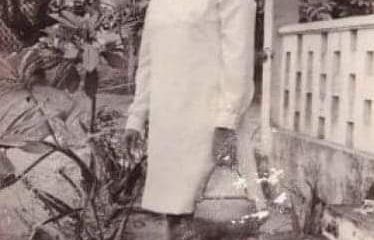
 History4 years ago
History4 years agoThe Origin Of “Mammy Market” In Army Barracks (Mammy Ochefu)
-
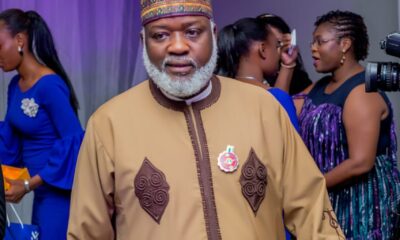
 Opinion3 years ago
Opinion3 years agoMy First Encounter with Nasiru Gawuna, the Humble Deputy Governor
-
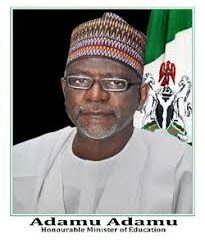
 News3 years ago
News3 years agoFederal University Of Technology Babura To Commence Academic Activities September
-
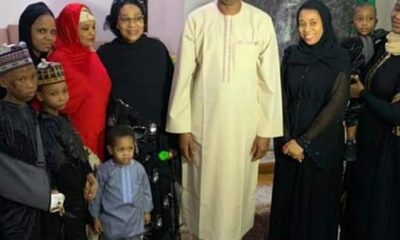
 History3 years ago
History3 years agoThe History Of Borno State Governor Professor Babagana Umara Zulum